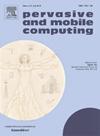CrowdWaterSens: An uncertainty-aware crowdsensing approach to groundwater contamination estimation
Abstract
Groundwater contamination poses serious threats to public health and environmental sustainability. In this paper, we explore smart groundwater contamination sensing, which aims to accurately estimate the nitrate concentration in groundwater via a crowdsensing approach. Existing solutions often require professional groundwater collection and high-quality measurement of groundwater properties, making the data collection process time-consuming and unscalable. In this work, we leverage the approximate nitrate concentration measured by crowd sensors (i.e., participants from well-dependent communities) to accurately estimate nitrate concentration in groundwater samples. Three critical challenges exist in developing the crowdsensing-based groundwater contamination estimation solution: (i) the spatial irregularity of the crowdsensing groundwater contamination data, (ii) the hidden temporal dependency of groundwater contamination in the anthropogenic context, and (iii) the uncertainty of crowdsensing nitrate measurements from crowd sensors. To address the above challenges, we develop CrowdWaterSens, an uncertainty-aware graph neural network framework that explicitly examines the uncertainty and spatial irregularity of the crowdsensing groundwater contamination data and its relevant anthropogenic context to accurately estimate groundwater nitrate concentration. We evaluate the CrowdWaterSens framework through two real-world case studies in well-dependent communities in Northern Indiana, United States. The evaluation results not only show the effectiveness of CrowdWaterSens in accurately estimating nitrate concentration, but also demonstrate the viability of crowdsensing for community-level groundwater quality monitoring.

 求助内容:
求助内容: 应助结果提醒方式:
应助结果提醒方式:


